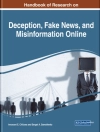Child Abuse and Neglect is the third volume sponsored by the Social Science Research Council. The goals of these volumes include the development of a biosocial perspective and its application to the interface between biological and social phenomena in order to advance the understanding of human behavior.Child Abuse and Neglect applies the biosocial perspective to child maltreatment and maladaptation in parent-child relations. The biosocial perspective is particularly appropriate for investigating parent behavior since the family is the universal social institution in which children are born and reared, in which cultural traditions and values are transmitted, and in which individuals fulfill their biological potential for reproduction, growth, and development. The volume examines biological substrates and social and environmental contexts as determinants of parent behavior. By identifying areas in which contemporary human parent behaviors conform with and depart from evolutionary and historical patterns and assessing the overall costs and benefits, it permits their objective assessment in terms of modern circumstances. In analyzing evolutionary and historical variations in parent behavior and assessing their costs and benefits, the book makes possible an objective assessment of contemporary variations. Its analysis of the occurrence of child abuse in past history and in other cultures and species advances our ability to predict the probability of child abuse and neglect in various social and ecological contexts.
Richard J. Gelles & Jane B. Lancaster
Child Abuse and Neglect [PDF ebook]
Biosocial Dimensions – Foundations of Human Behavior
Child Abuse and Neglect [PDF ebook]
Biosocial Dimensions – Foundations of Human Behavior
Dieses Ebook kaufen – und ein weitere GRATIS erhalten!
Sprache Englisch ● Format PDF ● Seiten 334 ● ISBN 9781351529129 ● Herausgeber Richard J. Gelles & Jane B. Lancaster ● Verlag Taylor and Francis ● Erscheinungsjahr 2017 ● herunterladbar 3 mal ● Währung EUR ● ID 5324436 ● Kopierschutz Adobe DRM
erfordert DRM-fähige Lesetechnologie












